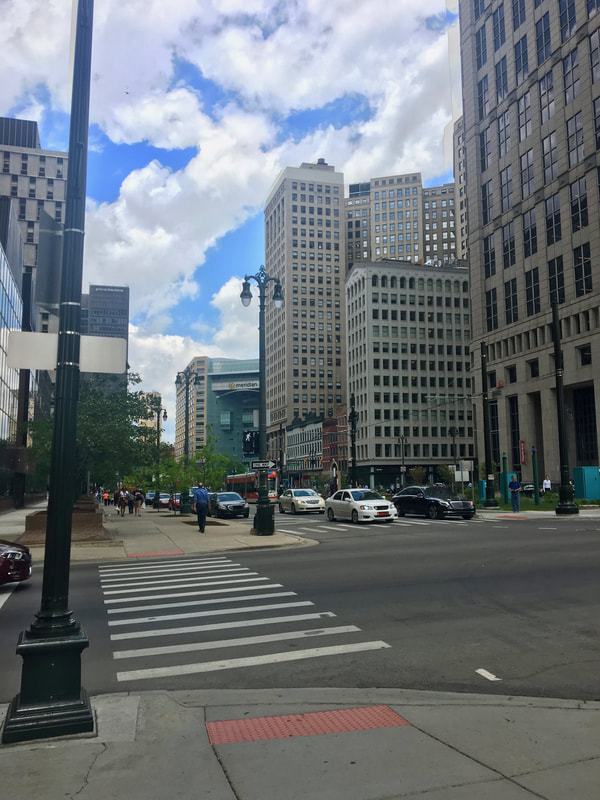Cities are man’s greatest creation. To live, work, entertain, and shop together in one dense area is the most efficient and sustainable way to live. Humans were made for cities. But, oddly enough, most American cities were not made for humans; they were made for cars. When in a car, one cannot interact with others outside. Large infrastructure, wide highways, and houses that are far apart and far away from economic development have become the conventions of an American city. In contrast, a city made for humans is one that is said to be of the “human scale,” a phrase often associated with the urban designer, Jan Gehl. Imagine a city where you didn’t have to worry about pedestrian fatalities or crossing massive concrete public plazas that seem to stretch for miles. A human scaled city is walkable and places the greatest emphasis on pedestrians and bicycles when considering the street layout. This city also allows for more interaction between people because they are in closer proximity, which improves collaboration. It has ample green space to offset the concrete conglomeration and it is the perfect density—skyscrapers aren’t overpowering in number and oppressive in height, and everything is still close enough to the point where a human can comfortably walk from work to the library, post office, grocery store, and then back home.
The city in which I have described is ideal, yet it is merely a conception, not a reality. Designing all cities must be viewed from a human perspective. This seems so trivial and obvious—we are all humans, so why would a city not be designed for us? These past few weeks of living in Detroit has shown me a narrative of a city that wasn’t designed for human scale. The vast highway infrastructure has divided communities. Enormous boulevards, like Martin Luther King Jr Blvd, are so wide that I barely have time to walk across them in the time allotted (perhaps this is because of flawed traffic light timing, but the boulevard still reinforces my claim that Detroit lacks human-sized infrastructure). While riding a bike downtown, there was no room for me on the congested road because of the number of cars rushing to get to parking garages.
This summer, I am challenging the ethos of a city that is dependent on cars. I am shifting the city from a car culture to one that supports sustainable modes of transportation designed on the human scale. Just like my ideal city, however, these plans for my summer are unattainable. I’m confronting an issue in a city that wasn’t made for a human, so it’s going to take more than just one of us to truly make an impact. For now, I’m assisting a mobility effort to increase accessibility of bikes for disabled humans. The human scale includes all humans, not just able-bodied ones, so it’s important to consider all abilities when planning a city. Sometimes I feel like my impact is minimal, but each time I answer someone’s question about how those red bikes work, I am increasing knowledge of human scaled transit, one human at a time, which could also be considered human scale.
The city in which I have described is ideal, yet it is merely a conception, not a reality. Designing all cities must be viewed from a human perspective. This seems so trivial and obvious—we are all humans, so why would a city not be designed for us? These past few weeks of living in Detroit has shown me a narrative of a city that wasn’t designed for human scale. The vast highway infrastructure has divided communities. Enormous boulevards, like Martin Luther King Jr Blvd, are so wide that I barely have time to walk across them in the time allotted (perhaps this is because of flawed traffic light timing, but the boulevard still reinforces my claim that Detroit lacks human-sized infrastructure). While riding a bike downtown, there was no room for me on the congested road because of the number of cars rushing to get to parking garages.
This summer, I am challenging the ethos of a city that is dependent on cars. I am shifting the city from a car culture to one that supports sustainable modes of transportation designed on the human scale. Just like my ideal city, however, these plans for my summer are unattainable. I’m confronting an issue in a city that wasn’t made for a human, so it’s going to take more than just one of us to truly make an impact. For now, I’m assisting a mobility effort to increase accessibility of bikes for disabled humans. The human scale includes all humans, not just able-bodied ones, so it’s important to consider all abilities when planning a city. Sometimes I feel like my impact is minimal, but each time I answer someone’s question about how those red bikes work, I am increasing knowledge of human scaled transit, one human at a time, which could also be considered human scale.

 RSS Feed
RSS Feed
